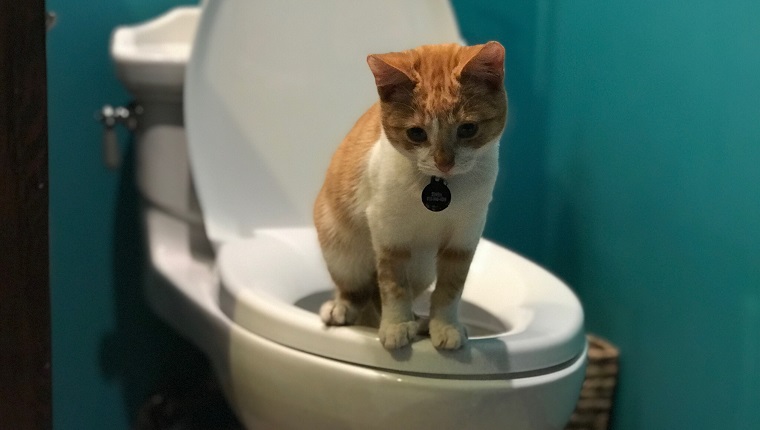Hazards of Flushing Cat Poop Down Your Toilet - Prevent Possible Problems
Hazards of Flushing Cat Poop Down Your Toilet - Prevent Possible Problems
Blog Article
We've found this article involving Can You Flush Cat Poop Down The Toilet? directly below on the internet and think it made sense to write about it with you on my blog.

Intro
As pet cat owners, it's necessary to be mindful of exactly how we deal with our feline close friends' waste. While it might appear practical to purge feline poop down the commode, this method can have destructive consequences for both the atmosphere and human health.
Environmental Impact
Purging cat poop presents harmful microorganisms and bloodsuckers into the water system, posturing a substantial risk to water ecological communities. These contaminants can adversely influence marine life and compromise water top quality.
Health Risks
In addition to ecological problems, purging pet cat waste can also position health and wellness threats to humans. Cat feces may have Toxoplasma gondii, a bloodsucker that can cause toxoplasmosis-- a potentially extreme illness, especially for expecting females and individuals with weakened immune systems.
Alternatives to Flushing
Luckily, there are more secure and more responsible ways to get rid of cat poop. Think about the complying with choices:
1. Scoop and Dispose in Trash
One of the most usual approach of dealing with feline poop is to scoop it into a naturally degradable bag and toss it in the garbage. Be sure to use a devoted trash scoop and throw away the waste without delay.
2. Usage Biodegradable Litter
Go with biodegradable pet cat clutter made from products such as corn or wheat. These clutters are environmentally friendly and can be securely disposed of in the trash.
3. Hide in the Yard
If you have a backyard, consider burying cat waste in a designated location far from veggie yards and water resources. Make certain to dig deep adequate to stop contamination of groundwater.
4. Mount a Pet Waste Disposal System
Buy a family pet garbage disposal system particularly developed for cat waste. These systems use enzymes to break down the waste, reducing smell and ecological effect.
Conclusion
Responsible pet dog possession prolongs beyond providing food and sanctuary-- it also involves correct waste monitoring. By refraining from flushing pet cat poop down the commode and selecting alternate disposal methods, we can minimize our ecological impact and shield human wellness.
Why Can’t I Flush Cat Poop?
It Spreads a Parasite
Cats are frequently infected with a parasite called toxoplasma gondii. The parasite causes an infection called toxoplasmosis. It is usually harmless to cats. The parasite only uses cat poop as a host for its eggs. Otherwise, the cat’s immune system usually keeps the infection at low enough levels to maintain its own health. But it does not stop the develop of eggs. These eggs are tiny and surprisingly tough. They may survive for a year before they begin to grow. But that’s the problem.
Our wastewater system is not designed to deal with toxoplasmosis eggs. Instead, most eggs will flush from your toilet into sewers and wastewater management plants. After the sewage is treated for many other harmful things in it, it is typically released into local rivers, lakes, or oceans. Here, the toxoplasmosis eggs can find new hosts, including starfish, crabs, otters, and many other wildlife. For many, this is a significant risk to their health. Toxoplasmosis can also end up infecting water sources that are important for agriculture, which means our deer, pigs, and sheep can get infected too.
Is There Risk to Humans?
There can be a risk to human life from flushing cat poop down the toilet. If you do so, the parasites from your cat’s poop can end up in shellfish, game animals, or livestock. If this meat is then served raw or undercooked, the people who eat it can get sick.
In fact, according to the CDC, 40 million people in the United States are infected with toxoplasma gondii. They get it from exposure to infected seafood, or from some kind of cat poop contamination, like drinking from a stream that is contaminated or touching anything that has come into contact with cat poop. That includes just cleaning a cat litter box.
Most people who get infected with these parasites will not develop any symptoms. However, for pregnant women or for those with compromised immune systems, the parasite can cause severe health problems.
How to Handle Cat Poop
The best way to handle cat poop is actually to clean the box more often. The eggs that the parasite sheds will not become active until one to five days after the cat poops. That means that if you clean daily, you’re much less likely to come into direct contact with infectious eggs.
That said, always dispose of cat poop in the garbage and not down the toilet. Wash your hands before and after you clean the litter box, and bring the bag of poop right outside to your garbage bins.
https://trenchlesssolutionsusa.com/why-cant-i-flush-cat-poop/

I hope you enjoyed reading our part about Don’t flush cat feces down the toilet. Thanks a ton for taking the time to browse our posting. Do you know somebody else who is fascinated about the niche? Take a moment to share it. Thank you so much for your time invested reading it.
Visit The Following Page Report this page